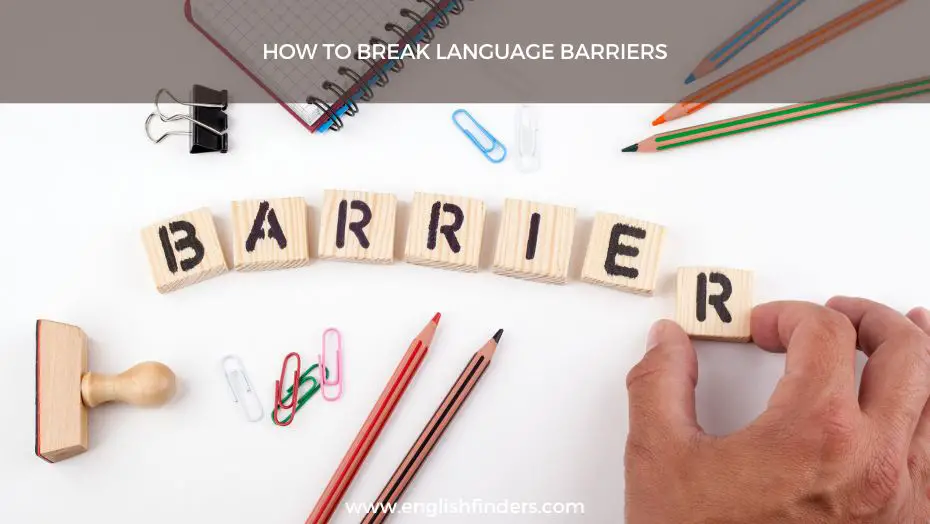In our increasingly globalized world, the ability to communicate effectively across linguistic divides is more important than ever. Whether you’re a business professional negotiating contracts, a traveler exploring new cultures, or an online content creator reaching a global audience, breaking language barriers is essential for success and connection. This post explores strategies for overcoming language challenges and enhancing communication in multilingual contexts.
Understanding the Language Barrier
Quick Navigation
The language barrier is not solely about the inability to speak another language. It encompasses difficulties in understanding cultural nuances, non-verbal cues, and idiomatic expressions that are intrinsic to effective communication. These barriers can lead to misunderstandings, frustration, and lost opportunities. Therefore, tackling these challenges requires a multifaceted approach.
How to Break Language Barriers
Let’s walk you through some important strategies to break the language barriers and improve your communication skills.
1. Understanding the Importance of Non-Verbal Communication
One of the first steps in overcoming language barriers is recognizing the power of non-verbal communication. Studies suggest that a significant portion of communication is non-verbal, including gestures, facial expressions, and body language. When language fails, these non-verbal cues become incredibly important.
For instance, a smile is universally recognized as a sign of friendliness and openness. By being mindful of your non-verbal signals, you can communicate positive intentions and foster understanding and trust, even without speaking the same language.
2. Learning Key Phrases and Words
While becoming fluent in a new language can be daunting, learning a few key phrases and words can go a long way. Phrases such as “Please,” “Thank you,” “Sorry,” and “I don’t understand” in the local language can help smooth over many interactions.
This effort shows respect for the culture and the people you are communicating with, often leading to a more positive response and willingness to help or engage in conversation.
3. Utilizing Technology and Translation Tools
Technology plays a pivotal role in breaking language barriers. It has made significant strides in this area, and translation apps, language learning software, and online dictionaries are invaluable tools.
Real-time translation devices and apps can also facilitate smoother communication in instant conversations. However, while technology can aid communication, it’s important to be aware of its limitations and inaccuracies.
While these tools could be better and sometimes result in errors, they can significantly aid basic communication and understanding. Having a translation app that works offline is also helpful, especially when traveling in areas with limited internet access.
4. Engaging in Active Listening and Clarification
Active listening is crucial in all communication but becomes even more important when language barriers exist. It involves fully concentrating, understanding, responding, and remembering what is being said.
In multilingual settings, giving the speaker your undivided attention is vital, as is asking for clarification if needed and confirming understanding to ensure the message has been accurately received.
Effective communication is as much about listening as it is about speaking. Engaging in active listening is essential for addressing language barriers.
This means listening intently to the other person and using techniques like paraphrasing or seeking clarification when necessary to ensure understanding.
Repeating what you think you have heard in your own words can uncover misunderstandings and provide an opportunity for clarification.
5. Embracing Patience and Maintaining a Sense of Humor
Patience is a virtue, especially when it comes to navigating language barriers. Miscommunications are likely to happen, and staying patient and positive is important. Maintaining a sense of humor can also ease any tension from misunderstandings. Laughing together over a linguistic faux pas can turn a potentially awkward situation into a moment of human connection.
6. Taking Language Courses or Seeking Immersive Experiences
Taking language courses or seeking immersive experiences can benefit those looking to break language barriers more comprehensively. Language courses provide structured learning and practice opportunities, whether online or in a classroom setting.
The best ways to become fluent are through immersive experiences, including moving to a nation where the language is spoken. These experiences improve language skills and deepen cultural understanding, making communication more nuanced and compelling.
7. Building Cultural Awareness
Language is deeply tied to culture, and understanding cultural context is essential for effective communication. Educating yourself about the cultural norms, values, and practices of the people you communicate with can help prevent misunderstandings and foster respect.
This might involve learning about appropriate greetings, body language, and conversational norms. By showing awareness and respect for another’s culture, you pave the way for more meaningful and effective communication.
8. Use Clear and Simple Language
Using simple language and short sentences is beneficial when communicating across language divides. Avoid slang, idioms, and complex vocabulary that may not translate well or could lead to confusion. Being clear and concise helps ensure that your message is understood, regardless of the listener’s language proficiency.
9. Non-verbal Communication
Body language, gestures, and facial expressions are examples of important non-verbal clues in communication. Sometimes these signs are more expressive than words alone.
However, it’s crucial to be aware of cultural differences in non-verbal communication to avoid misinterpretation. Researching and understanding these differences can significantly enhance interaction and understanding.
10. Seek Feedback
Feedback is a powerful tool for improving communication. Asking for Feedback on your language skills and communication methods can provide insights into areas of misunderstanding or confusion. Similarly, providing gentle and constructive Feedback can help others improve their communication with you.
11. Embrace Cultural Differences
Understanding and embracing cultural differences is foundational to effective communication. This involves not only language but also customs, etiquette, and values. Engaging with the culture through travel, food, music, or literature can enrich your understanding and appreciation, enhancing communication.
12. Practice Patience and Empathy
Patience and empathy are the most critical components of breaking down language barriers. Recognizing the effort it takes to communicate in a non-native language, being patient with misunderstandings, and empathizing with possible frustrations are essential for positive interactions.
13. Professional Translation and Interpretation Services
Professional translation and interpretation services are indispensable in specific contexts, such as legal, medical, or high-level business communications. These experts ensure that communication is accurate and culturally appropriate, minimizing the risk of misinterpretation.
Final Thoughts
Breaking the language barrier requires a multifaceted approach beyond mere words. It involves understanding non-verbal communication, a willingness to learn and use key phrases, strategic use of technology, active listening, patience, humor, and a deep appreciation for cultural nuances.
Adopting these strategies can enhance your ability to communicate effectively across linguistic divides, opening up personal and professional growth opportunities.

Azizul Hakim is the founder & CEO of englishfinders.com. He is a passionate writer, English instructor, and content creator. He has completed his graduation and post-graduation in English language and literature.




